Dateline: Pearl Harbor, Hawaii – December 7, 1941 – 7:48 am Hawaii Time – Japanese Attack on Pearl Harbor Commences
“Yesterday, December 7, 1941, a date which will live in infamy, the United States of America was suddenly and deliberately attacked by naval and air forces of the Empire of Japan.” – Franklin Roosevelt in his speech to Congress on Monday, December 8, 1941
Seventy-five years ago, a sleepy United States Naval Base in the middle of the vast Pacific Ocean awoke on that fateful Sunday morning to the sound of aircraft which were shooting and dropping bombs on the US Navy fleet that was moored in Pearl Harbor adjacent to Ford Island over the island of Oahu. On that fateful day, two thousand four hundred and three servicemen died with one thousand one hundred and seventy-seven killed on the USS Arizona alone when it exploded after being hit by an aerial bomb. Up until this point in United States history, this was the worst naval defeat ever experienced before or since, but the attack galvanized a nation that was up until that point sharply divided on the question of the war. The nation came together in a manner not seen until the September 11, 2001 terrorist attacks.This year marked the Seventy-Fifth Commemoration of the “date which will live in infamy”, and I had the opportunity to attend and participate in the commemorative events in person. The trip was a once-in-a-lifetime experience for me as I had the opportunity to meet many Pearl Harbor survivors including four of the five living USS Arizona survivors and several score of World War II veterans who spoke of their willingness to do it all over again if the country needed them. These men are all heroes to me because their combined resolve and indomitable spirit helped free the world from tyranny.
I arrived in Honolulu, Hawaii on Friday, December 2, 2016 and was met with a traditional lei greeting and transported to my hotel which happened to be the headquarters of many of the commemorative events for the week. I accomplished a goal that my uncle, John Cromlish, had set before me as a child; visit all fifty of the United States. Hawaii was the last state that I had left to visit and there is something apropos about visiting the last state admitted to the union as the last state in my goal of visiting every one of them. My week in Hawaii was focused on visiting the ceremonies, monuments, and museums that remembered that fateful day in 1941.
Saturday morning, I was struck by the beauty that I saw from my hotel balcony and I knew I had arrived in paradise, but I could not help being struck that this beautiful place had been turned to hell on earth for many young servicemen, service women, and civilians in a blink of an eye that day. There were many who did not survive that day and they were laid to rest at the National Memorial Cemetery of the Pacific in the Punchbowl. That was my first stop for the week and I was struck by the solemnity and beauty of this final resting place for soldiers, sailors, airmen, and marines. The Daughters of the American Revolution and Eva Ann Via requested that I place pink carnations on the graves of Ernie Pyle, Daniel K. Inouye, and other men who had served and some who had paid the ultimate sacrifice. The monument at the cemetery stated so eloquently to the mothers and those laid to rest the words from the Bixby Letter written in 1864 by Abraham Lincoln which stated, “The solemn pride that must be yours to have laid so costly a sacrifice on the altar of Freedom.” This visit and seeing the names of the missing from World War II put the entire week in the proper perspective and from here I made sure to remember that while we were celebrating the survivors of the attack and World War II, we must also remember those who made the supreme sacrifice. As many of the veterans stated, we are not the heroes, the heroes still rest in Pearl Harbor or the far-flung battlefields like Guadalcanal, Tarawa, Iwo Jima, Normandy, Anzio, Tunis, and the Battle of the Bulge. The Pacific Aviation Museum hosted a gala event in Hangar 79 on Ford Island celebrating the museum’s tenth anniversary with many of the Pearl Harbor survivors and World War II veterans. When I looked at the windows of the hangar door, I could still see the bullet holes made by the Japanese airplanes on that day.At the event, I met a young man, Bert, who served in the Naval Ground Forces during the war. At ninety-two, he still fit in his Navy whites and looked like he could go back to sea if the nation needed him again. The gnarled hands with a handshake of iron told me that this man was just one of many who while not happy to have to fight the war but willing to do what it took to help the nation overcome its enemies. David Hartman and Gary Sinise addressed the crowd about their parents and other family who served during the war and I spoke to several families who were all too happy to tell their stories. People tend to forget that while we hail them as heroes, they were still individuals with hopes, fears, and dreams who in their words, “somebody had to do it, why not us?” The common theme from many of the men was that it was job that needed doing and they just buckled down and did it. The theme for the evening’s festivities was “For love of country, pass it on.” The reminder in that theme is that we must continue to remember and pass the lessons from the war to the next generation.
I awoke Sunday morning, December 4, to find that Hawaii was overcast and rainy, but that did not dampen the mood of anyone involved in the week’s celebrations. At the Hilton Hawaiian Village on Waikiki from ten until twelve, the public had the opportunity to meet four of the five remaining survivors of the USS Arizona; Louis Conter, Don Stratton, Ken Potts, and Lauren Bruner. From the hotel, I returned to the Pacific Aviation Museum and Ford Island where I had a ticket to attend the world premiere of the “Remember Pearl Harbor” documentary in Hangar 79 along with the rededication of the aerological tower. The tower also showed the scars and the marks of the battle and was attended by more of the veterans who streamed in over the weekend thanks to the efforts of many veterans’ groups and other individuals. Gary Sinise, the actor, was instrumental in making sure as many veterans who were able could attend at no cost to their families.
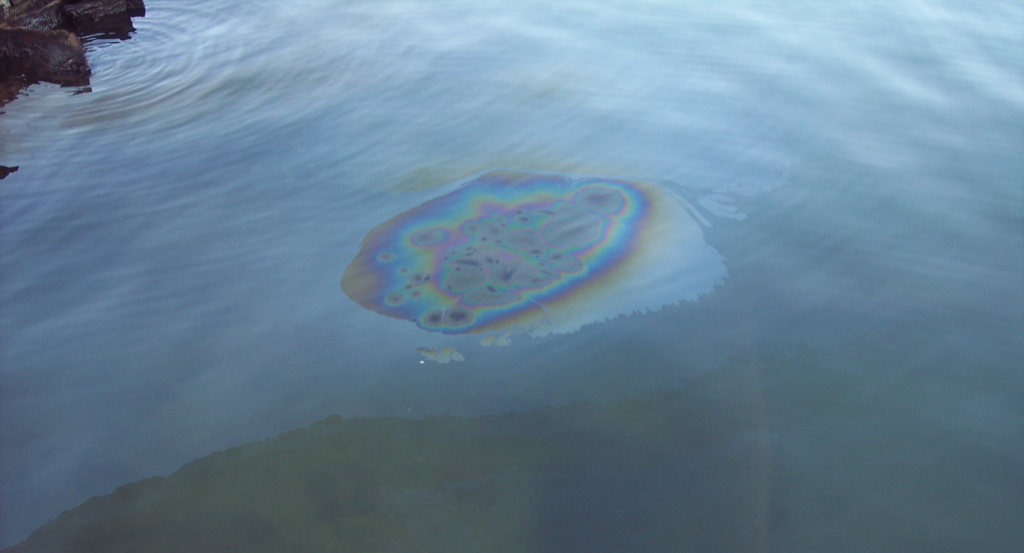 The rain subsided overnight Sunday and on Monday morning, I went to the USS Arizona Memorial where I saw and felt first-hand the intense loss that the ship’s sinking brought to many. I will admit openly and without shame that I cried when I looked at the wall of names in the memorial room and saw all the young men who died in that attack on that mighty battleship. It was a moving experience for everyone that day especially since there was a Pearl Harbor survivor telling his story about where he was and what he had done. The main thing I took away from this was that those who survived were lucky but they also dealt with the question, “God, why did you let me survive?” That question has been asked in tragedies and war from time immemorial and it is a question that will have no answer this side of heaven.
The rain subsided overnight Sunday and on Monday morning, I went to the USS Arizona Memorial where I saw and felt first-hand the intense loss that the ship’s sinking brought to many. I will admit openly and without shame that I cried when I looked at the wall of names in the memorial room and saw all the young men who died in that attack on that mighty battleship. It was a moving experience for everyone that day especially since there was a Pearl Harbor survivor telling his story about where he was and what he had done. The main thing I took away from this was that those who survived were lucky but they also dealt with the question, “God, why did you let me survive?” That question has been asked in tragedies and war from time immemorial and it is a question that will have no answer this side of heaven.
The “Remember Pearl Harbor” gala was held Tuesday night at the Hilton Hawaiian Village and was hosted by the Pacific Parks. Many veterans attended and I had the opportunity at the reception prior to the event to talk to not only Pearl Harbor survivors but veterans of the European theater. A group of men that I met took me as one of their own and told me their stories, regaled me in acts of frivolity, and told me that the only way to live life was to love it and do everything you can to “seize the day” since tomorrow was never guaranteed as they well knew.
For me, the remembrance ceremony on Kilo Pier on Wednesday morning, December 7, 2016, was a highlight with a speech by Admiral Harry Harris, Commander, US Pacific Command. He spoke of the honor he felt for the men and women of the Greatest Generation who had gathered on the pier and remembered the sacrifices made to free the world from tyranny. The event ended with the wreath laying ceremony where each branch of the service along with the National Park Service placed wreaths in remembrance of the 2,403 lives that were lost that day.
For me, the poignancy of the week was that everyone I met during the week had some story to tell about their family’s sacrifice during the war and the veterans were so giving of their time to everyone who wanted a picture, comment, or other piece of their finite time. There never seemed to be anyone upset or angry about having to wait and the level of respect shown was unexpected. I will long remember this trip because of the new friends I made and the conversations I had with men who were of the same generation of my grandparents. I came also to see one of the places that the young men of Belmont served during the war. Gene Reinhardt, who saw the bombs fall while serving at Scofield Barracks, and James ‘Red’ Joye who served in North Africa and Italy. This was their trip even though they could not make the journey. It was a journey of remembrance and a journey of looking ahead to “Remember the Past and Inspire the Future” and I am happy to have experienced it.
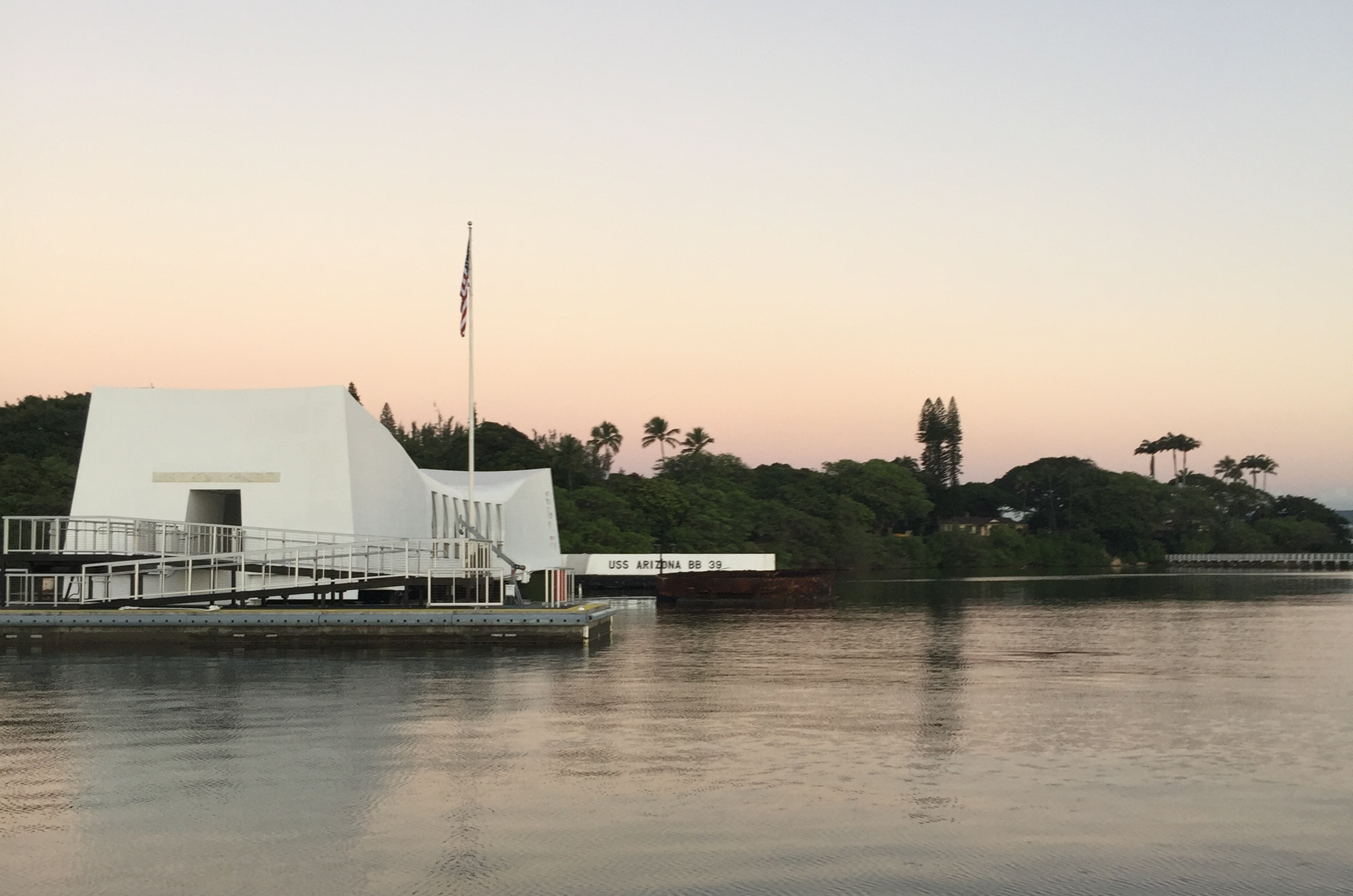
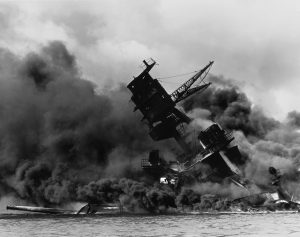
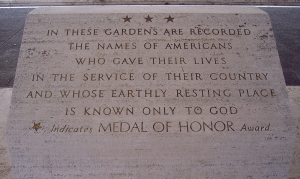
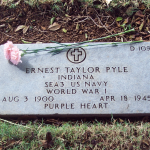
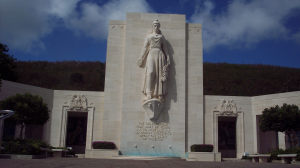
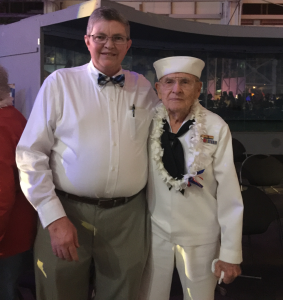
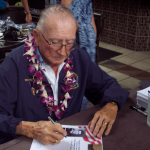
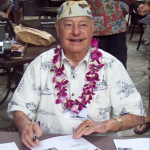
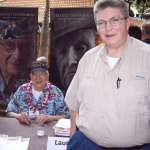
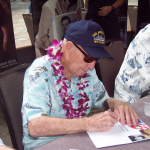
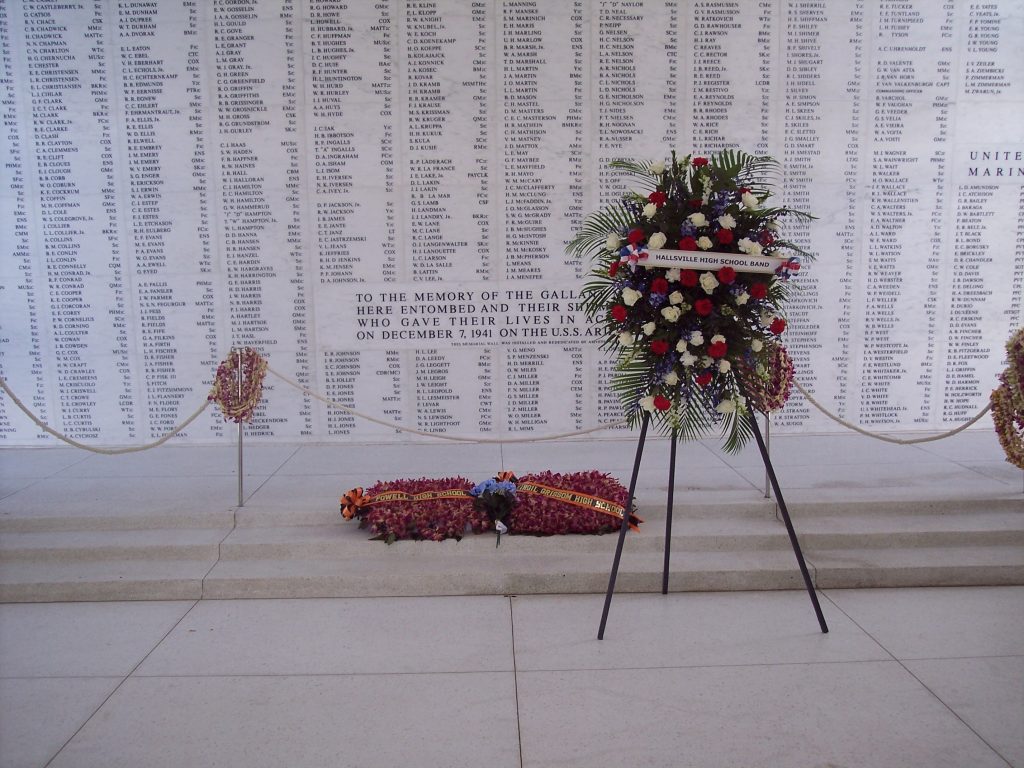
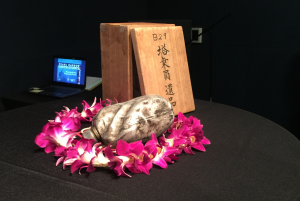
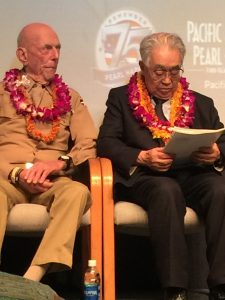
You have done a great job. Brown